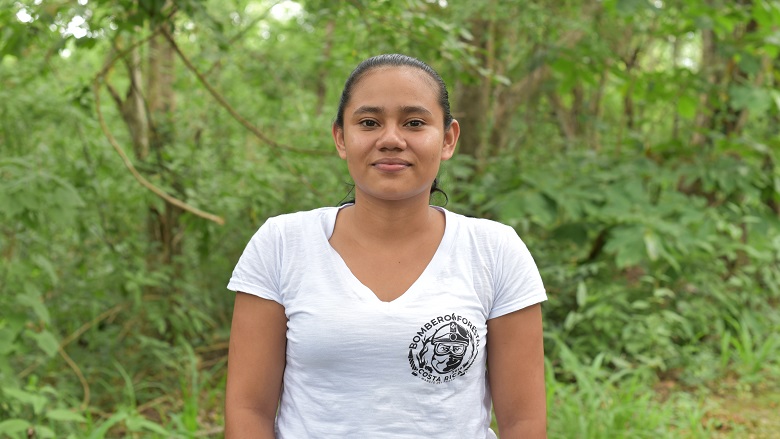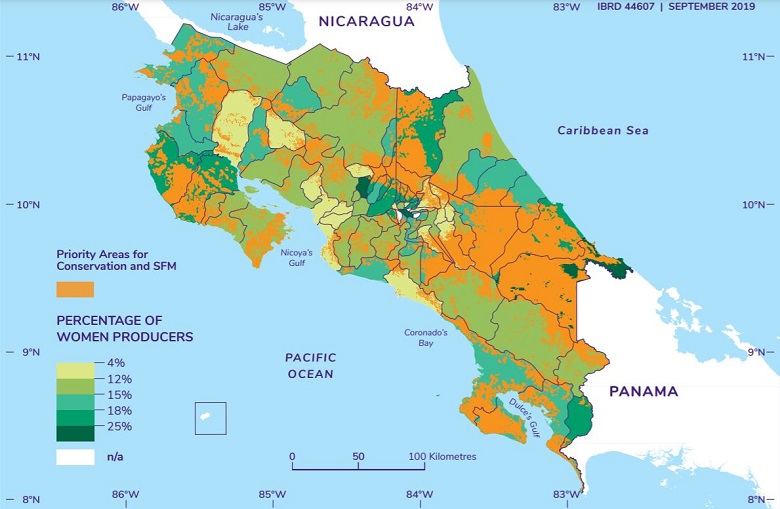It is the dry season in the mountainous northwestern corner of Costa Rica’s Nicoya Peninsula. Ana Luz Diaz is on high alert. Uncontrolled forest fires are all too common in the Cerros de Jesus Biological Corridor near her home, but she is ready.
Diaz is a forest fire fighter and one of five women on a 30-member fire brigade. When the women joined the force, they were initially met with skepticism.
“There is always that myth or macho thought that a woman cannot grab a machete, a back pump, a leaf blower, that she can't go up a big hill,” says Diaz.
Like fighting fires, overcoming gender stereotypes is hard work. Diaz and her fellow brigadista are proving their mettle and gaining recognition for their contributions, particularly their effectiveness in “finishing off” forest fires.
Diaz says change is happening, but more must be done. Her colleague Melissa Aviles agrees: “I want to be someone, to be seen, not be invisible. I want both men and women to see each other and the support that we too can give.”
Women own less land and fewer and smaller farms than men, receive less financial support for them, and participate less in Costa Rica’s payment for environmental services (PES) program.
Recognizing and supporting women’s participation
A concerted effort is underway to better recognize, promote, and value the different ways women and men contribute to work related to the environment, forests, and climate change. The push is backed by national environmental policies that are helping to restore forest cover, as well as a specific and robust regulatory framework to promote gender equality.
“Costa Rica is at the forefront of sustainability when it comes to human rights, social issues, and the environment,” says Stavros Papageorgiou, World Bank Senior Natural Resources Management Specialist. “The country has shown it has the institutions, legislation, and political will to build on programs and practices already in place and truly integrate gender into land use sector planning.”
In 2019, Costa Rica became one of the few countries in the world to prepare a Gender Action Plan (GAP) for its national strategy on reducing emissions from deforestation and forest degradation (also known as REDD+) through enhanced forest management.
The GAP was developed with funding from the Forest Carbon Partnership Facility (FCPF) and in partnership with gender experts, civil society organizations, groups of indigenous women, and rural smallholder forest producers. It provides a clear path for guaranteeing financial resources, technical assistance, and monitoring to empower and support women so they can implement high-impact activities in the country’s priority forest areas.
The GAP is helping to shape Costa Rica’s Emission Reductions Payment Agreement (ERPA) with the FCPF. Once finalized and signed, with a likely contract value of $60 million, the agreement will reward communities for their REDD+ efforts. A percentage of the ERPA funds will be earmarked to support women’s initiatives de-linked from the property rights requirements that PES schemes often entail.
“This gender analysis is a real game changer. The evidence and data have empowered new thinking on how we motivate, support, and recognize women’s contributions to sustainable productive landscape initiatives,” explains Héctor Arce Benavides, National REDD+ Strategy Director of FONAFIFO, the country’s national forestry financing fund.
Seeing clearly through a gender lens
The GAP analysis found that many areas with a high percentage of women-owned farms overlap with areas marked by poverty. The analysis also found that women-owned farms overlap with priority zones for forest conservation and sustainable management, forest landscape and ecosystem restoration, and the promotion of low-carbon production systems. Yet, up until now, many of these efforts have not targeted women’s participation or have simply left them out.




